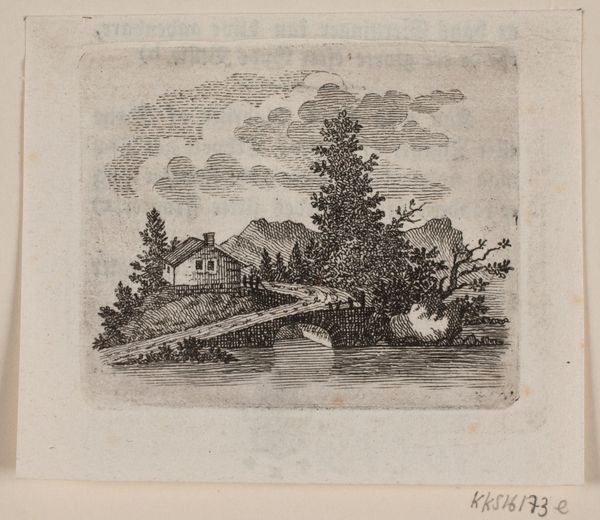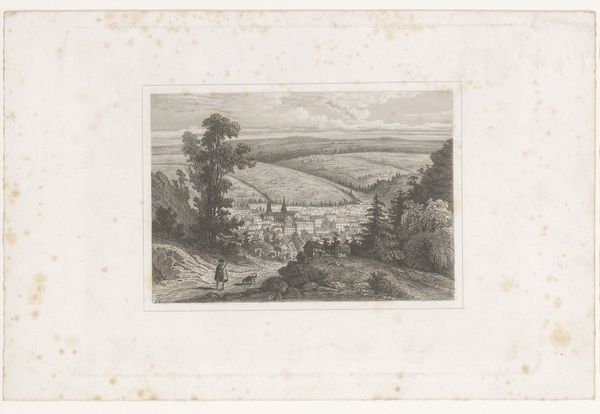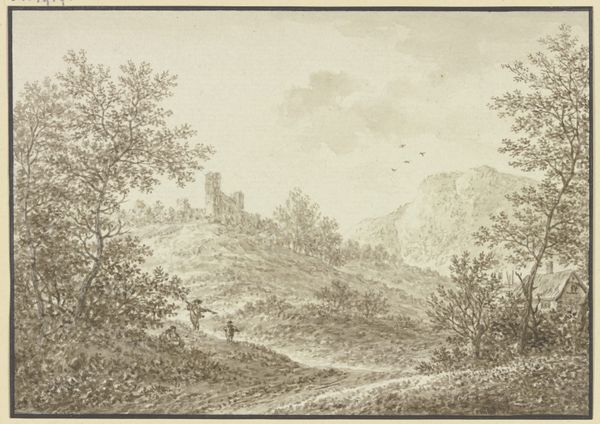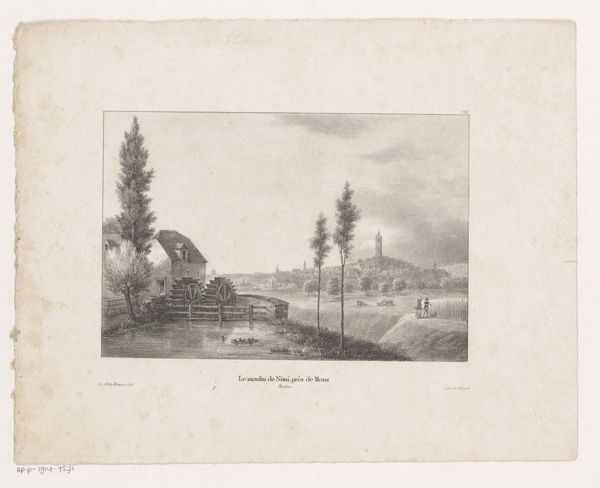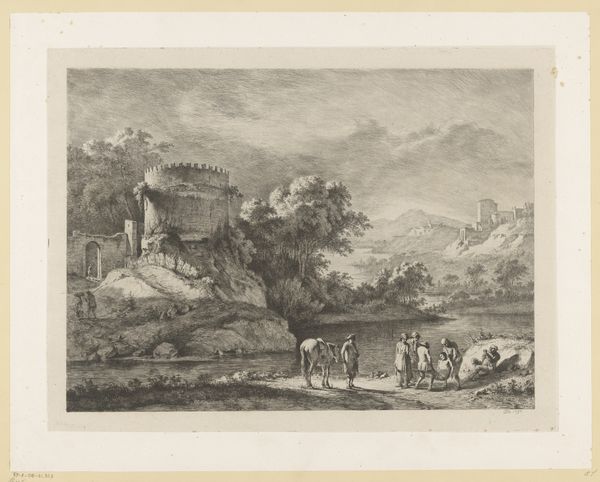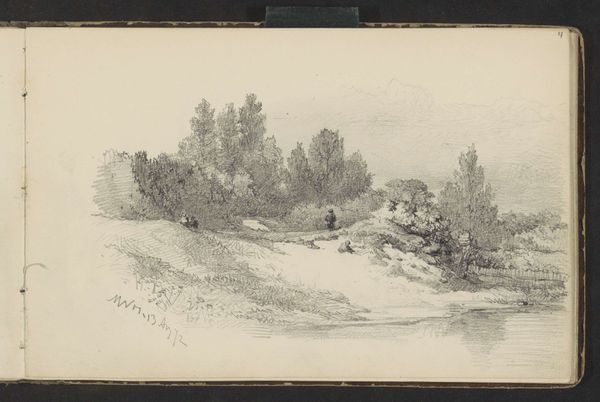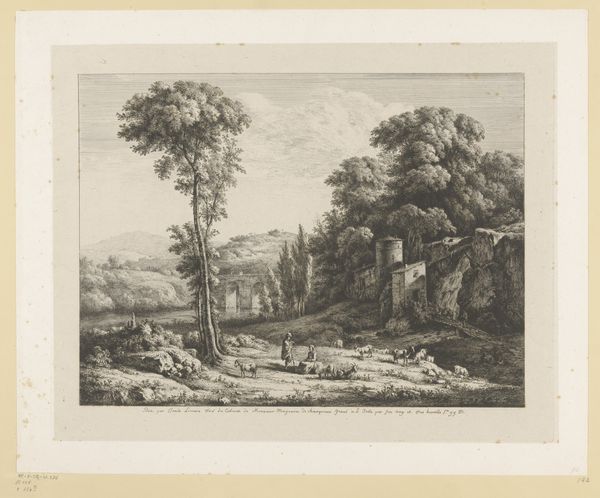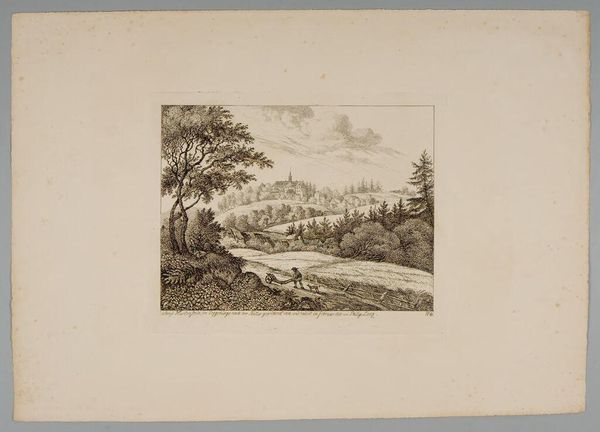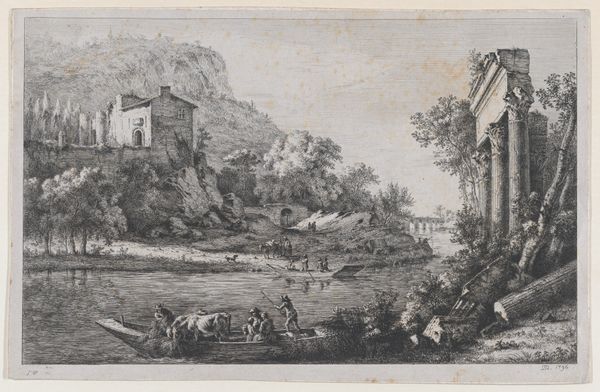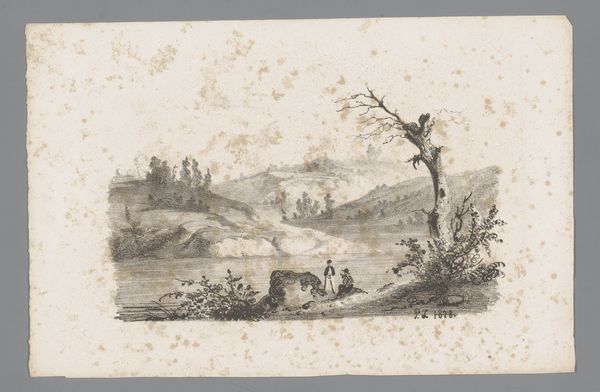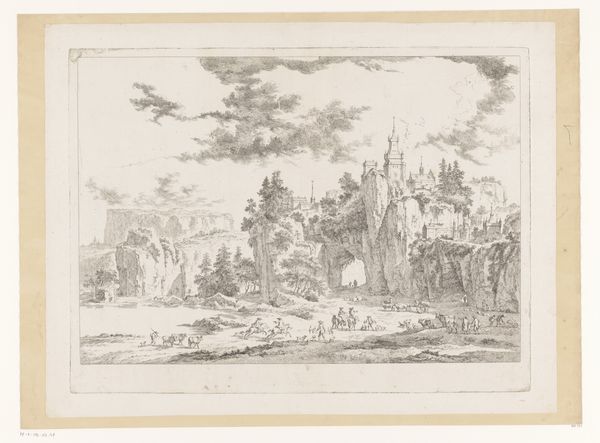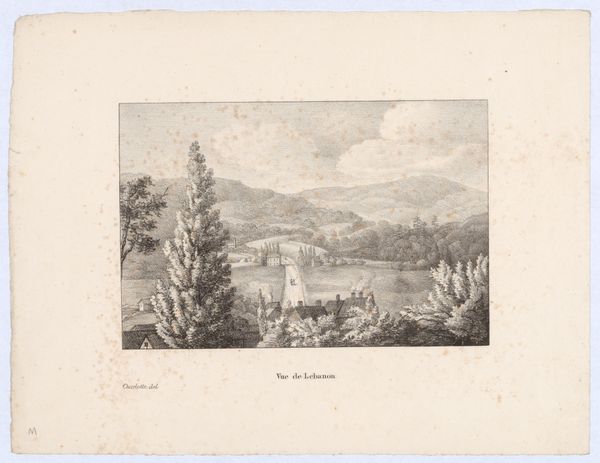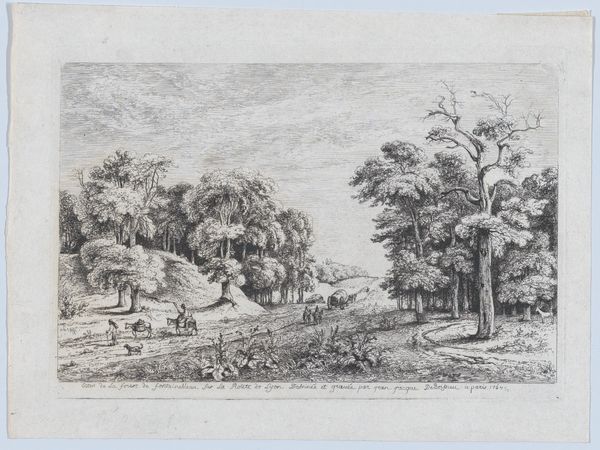
drawing, lithograph, print, engraving
#
drawing
#
ink painting
#
lithograph
# print
#
landscape
#
engraving
Dimensions: 253 mm (height) x 352 mm (width) (bladmaal)
Curator: Here we have "Landskaber fra udlandet," which translates to "Landscapes from Abroad," dating from 1796 to 1883, created by Frederik Schepelern. It's comprised of engraving, lithography, drawing, and print media. Editor: It feels so serene, yet subtly melancholic. The linear perspective is striking; it directs the gaze into the soft distance but is constrained by the solid church at the edge. What strikes you about its materiality? Curator: Considering its creation likely involved multiple stages and potentially various workshops, one must acknowledge the labour involved in its reproduction. Think of the apprentices carefully etching the design, the quality of the inks, and the paper itself—these prints would have democratized landscape imagery. Editor: Agreed, the mechanical reproduction transforms a specific location into a commodity. I wonder about the semiotics of landscape in that time period, though; that picturesque style feels so deliberate in evoking certain moods and associations. That steeple stands out, and so do those thin, regimented, almost oppressive, trees. Curator: Absolutely. There's also the performative aspect of observing this artwork itself. The artist isn’t just documenting the world, they're offering a specific, manufactured viewpoint; in other words, they were creating a desired landscape that could be widely viewed through their production. Editor: This leads to an interesting conflict with this landscape. The medium serves to give it some universality and shareability, but is it worth giving up an actual immersive encounter with this space that is meant to appear 'natural'? It makes one consider what experiences people were or weren’t having at the time, and how those limitations could affect our interactions and analyses today. Curator: It truly captures a certain historical gaze—a specific construction and aestheticization of nature for an emerging public audience through very specific and well considered methods of reproduction. Editor: Right, each material aspect of the print illuminates this. A fascinating example of how a "simple" landscape print carries layered complexities.
Comments
No comments
Be the first to comment and join the conversation on the ultimate creative platform.
